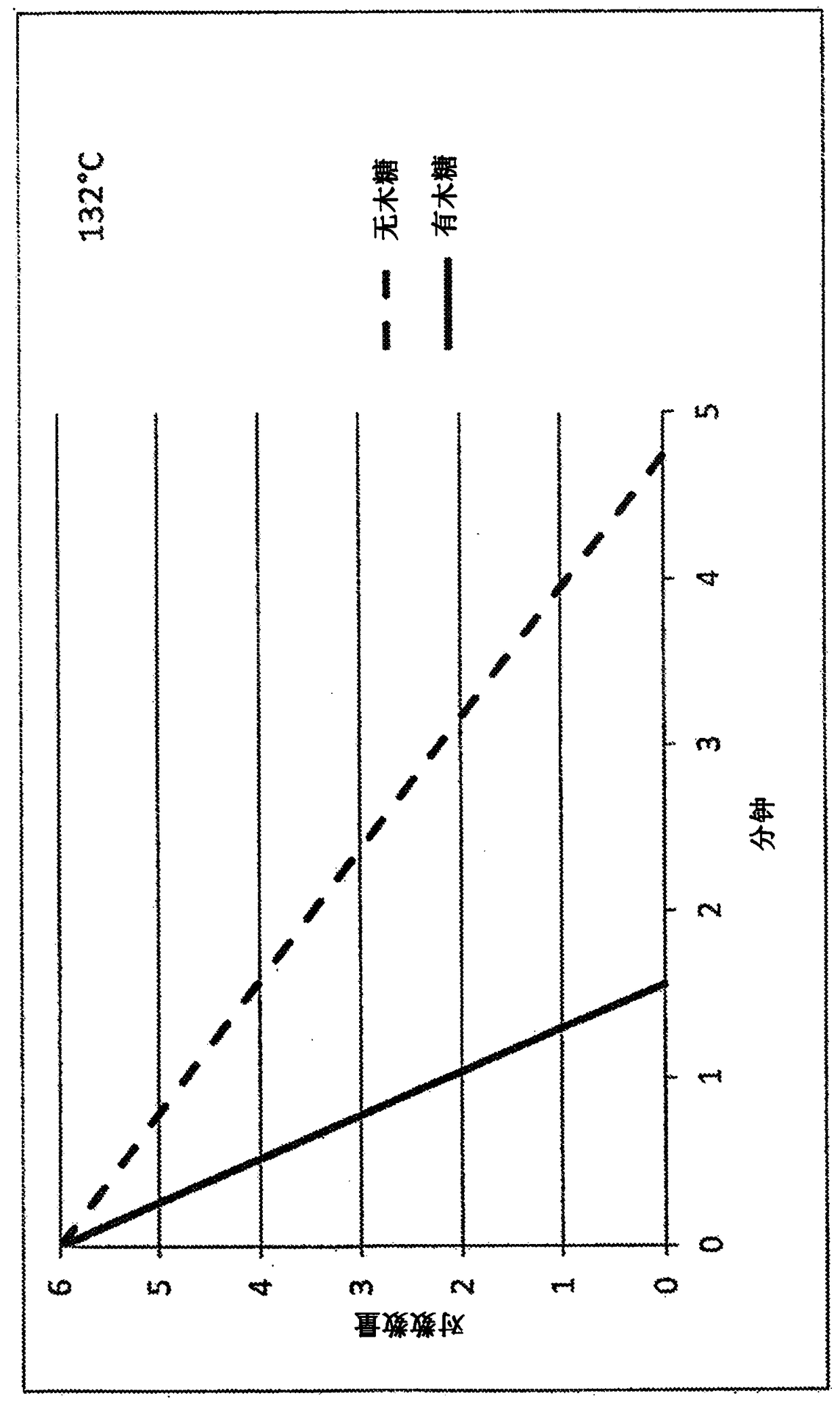Biological indicators
A biological indicator, biological technology, applied in the direction of biomass post-processing, biochemical equipment and methods, microbial measurement/inspection, etc., can solve the problems of incomplete inactivation of test organisms, unsuccessful sterilization cycles, etc.
- Summary
- Abstract
- Description
- Claims
- Application Information
AI Technical Summary
Problems solved by technology
Method used
Image
Examples
example
[0067] In the following examples, test organisms were prepared using a standard batch of spores of G. stearothermophilus suspended in an aqueous carbohydrate solution. In these examples, xylose and dextrose were used as carbohydrates. Also provided are comparative examples in which no carbohydrates were used. In each case, the aqueous suspension was placed in a vial and the suspension was allowed to dry. It's like Image 6 shown. The resulting biological indicators were tested for resistance. Tests showed that resistance was unexpectedly reduced when the biological indicator was derived from a carbohydrate solution compared to when no carbohydrate was used.
[0068] In these instances, use Figure 5A The Biological Indicator Evaluation Resistance Render (BIER) container depicted in BIER tests the resistance of biological indicators to steam sterilization. refer to Figure 5A , BIER container 300 includes a chamber 310, a door 320, and an internal shelf 330 for placing b...
example 1
[0074] The resistance of biological indicators to steam at 121 °C was evaluated in a BIER vessel. The first group of biological indicators was derived from a suspension of spores of Geobacillus stearothermophilus in water. A second set of biological indicators was derived from a suspension of spores in a 1.67M xylose solution. Compared with the first group of biological indicators without xylose solution (log reduction of 6 in about 20 minutes), when using the second group of biological indicators derived from xylose solution (log reduction in about 5 minutes When 6) is reduced, the resulting kill kinetics are significantly shorter. It's like figure 1 shown.
example 2
[0076] The test performed in Example 1 was repeated except that the test was performed at 132°C in the BIER vessel. This test showed a decrease in resistance from about 5 minutes (without xylose) to about 1.5 minutes (with xylose). The killing process was faster at 132°C than at 121°C. The addition of xylose further reduced the resistance. It's like figure 2 shown.
PUM
 Login to View More
Login to View More Abstract
Description
Claims
Application Information
 Login to View More
Login to View More - R&D
- Intellectual Property
- Life Sciences
- Materials
- Tech Scout
- Unparalleled Data Quality
- Higher Quality Content
- 60% Fewer Hallucinations
Browse by: Latest US Patents, China's latest patents, Technical Efficacy Thesaurus, Application Domain, Technology Topic, Popular Technical Reports.
© 2025 PatSnap. All rights reserved.Legal|Privacy policy|Modern Slavery Act Transparency Statement|Sitemap|About US| Contact US: help@patsnap.com



